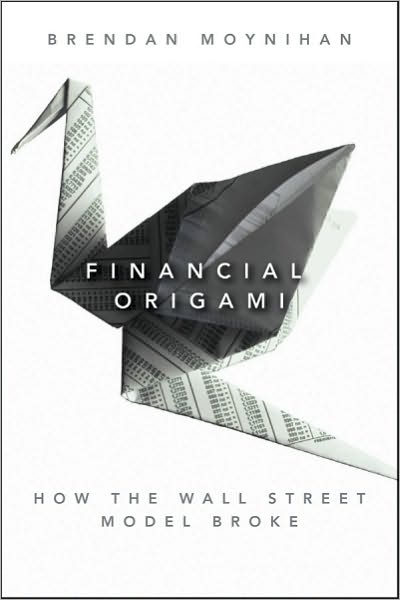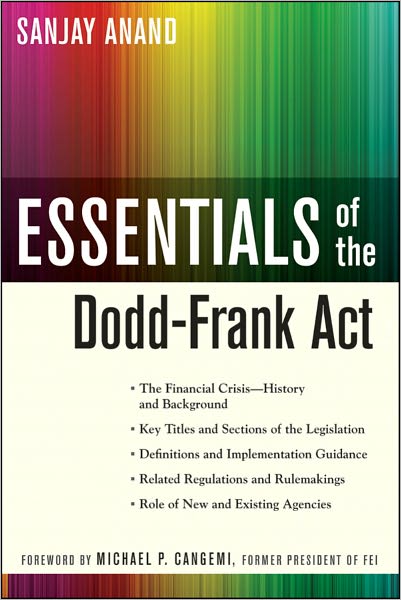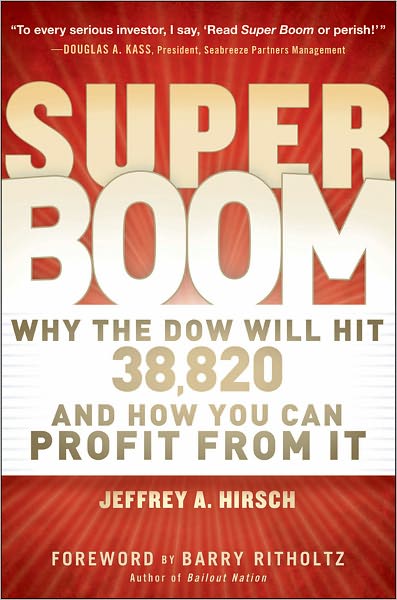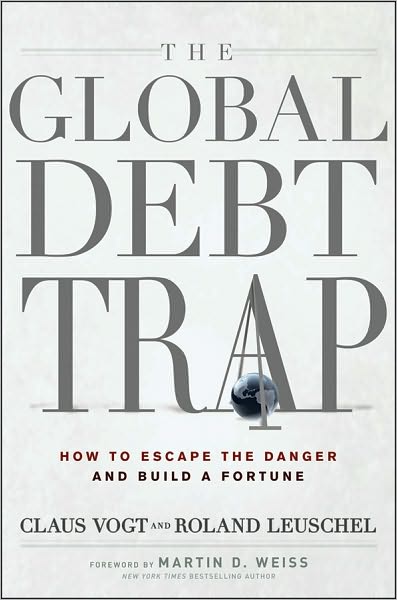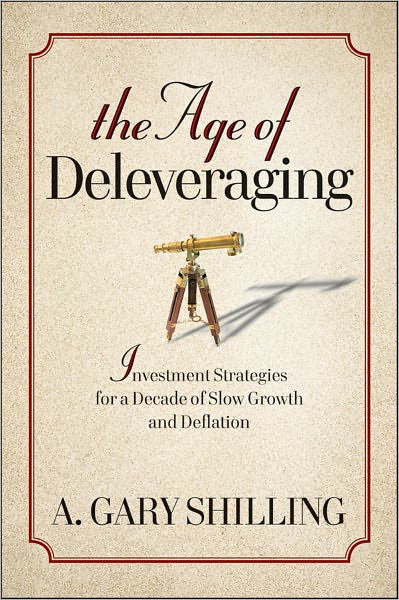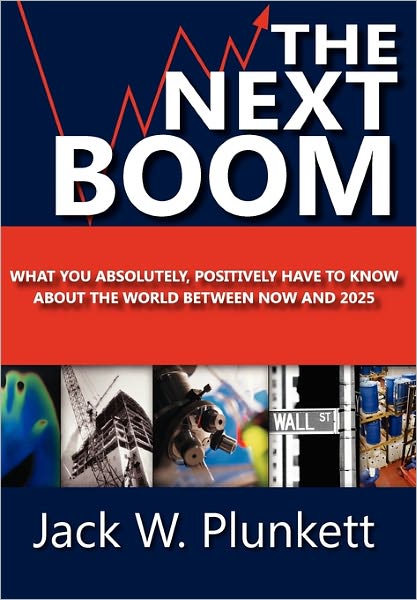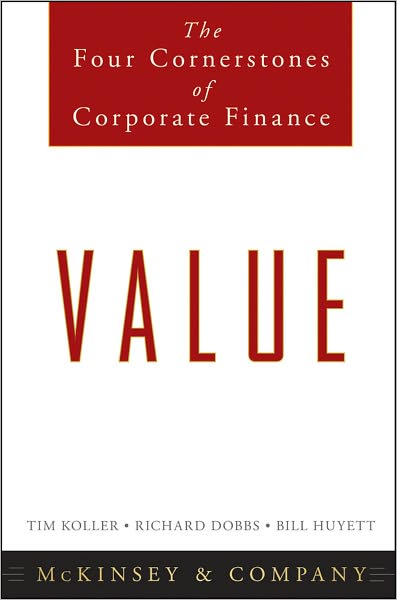I don’t often do a Q&A with book authors, but I appreciated my dealings with Roddy Boyd, the author of Fatal Risk.? It’s official publication date is tomorrow, but it is now available at Amazon.? If you want to buy it, you can find it here: Fatal Risk: A Cautionary Tale of AIG’s Corporate Suicide.
Full disclosure: This book was sent to me by the author, unsolicited.
If you enter Amazon through my site, and you buy anything, I get a small commission.? This is my main source of blog revenue.? I prefer this to a ?tip jar? because I want you to get something you want, rather than merely giving me a tip.? Book reviews take time, particularly with the reading, which most book reviewers don?t do in full, and I typically do. (When I don?t, I mention that I scanned the book.? Also, I never use the data that the PR flacks send out.)
Most people buying at Amazon do not enter via a referring website.? Thus Amazon builds an extra 1-3% into the prices to all buyers to compensate for the commissions given to the minority that come through referring sites.? Whether you buy at Amazon directly or enter via my site, your prices don?t change.
=–=-=-=-=-=-=-==–==-=–==–==-=-=-=-=–=-=
1) What impressed you most about your interview(s) with M. R. Greenberg?
To begin, his utter and consuming passion for AIG. He does not distinguish between AIG and himself, at least in any appreciable sense. What happened to AIG thus happened to him and vice versa. He will never forget anything and he will never forgive anything. Nor, for that matter, will he concede very much. The other issue is that per David Schiff?s observation, Greenberg never stops, he is ?Always running.? Since his obsession is work, then everything else in his life can be elegantly understood: The foreign policy stuff, bringing his sons into the business, the travel schedule of a foreign diplomat, the boards and foundations. Since AIG was everywhere and doing everything so was Greenberg.
2) If you could have gotten others to talk with you, who would they be, and what questions would you want them to answer?
It?s a tie between Win Neuger and Martin Sullivan. I?d want to ask Sullivan if he really saw events per his Congressional testimony on the fall of 2008, where he laid much blame for the collapse at the feet of mark-to-market accounting. This is akin to Morgan Stanley?s John Mack complaining about short-sellers at the same time–a complete abdication of all intellectual responsibility. I?m guessing Sullivan has a lot more to say than just stuff about accounting. Regardless, no one at AIG had much to say about mark-to-market accounting in 2005-2007, when they had billions of dollars in unrealized gains from their sundry portfolios.
With Neuger, I would want to start at the very beginning of the expansion of the securities lending portfolio, which tracks to around the very minute of Greenberg?s departure. It?s easy to take shots after a crash but I wouldn?t do that; I?d want to know how he thought AIG was going to have a different end than the number of other securities lending portfolios that extended duration during low rate cycles and modest volatility. I?d also want to know when HE realized there was trouble, that you can?t always unload $150 million worth of mortgage-credit paper on the bid side. That conversation might get interesting.
3) AIG Financial Products had three eras, with three different managements, strategies, and interactions with AIG parent company.? Why wasn?t AIG able to manage AIGFP to keep it sound?
In a word: competition. In 1987 the only limits to what FP could do was what they could dream up. They dominated the landscape with a virtual monopoly. Come 1996, every I-bank and commercial bank was in rate swaps in a big way and, in the case of Gen Re and Credit Suisse, had their own Financial Product units seeking to do ?bespoke? transactions. By 1999, Goldman was actively leveraging its corporate finance relationships to do custom transactions. Hedge funds, by the early parts of last decade, are competing with them on the asset finance side and on every sort of complex short-term trade FP entered, they were competing against the prop desks of Goldman, Merrill, J.P.Morgan and the like.
There is also the intellectual drift common to every enterprise. A founder comes in and designs a business in a certain fashion; By the second or third generation of management, it?s highly unusual to have the same rigid adherence to the founder?s goals. For an (extreme) example, look at the Ford Foundation and its role within the Liberal firmament and then look at who Henry Ford was. The divergence of mission usually occurs obliquely. For instance, Joe Cassano would have looked askance at a speculative bet directly on the mortgage market via Freddie or Fannie passthroughs. Instead, FP wound up long the mortgage market via writing insurance coverage they were told would never be impaired.
4) Are there any areas/subsidiaries inside AIG that you would want to look more closely at after writing Fatal Risk?
Not really.
5) What do you think the last moment was that AIG still had control of its own destiny was?
Maybe late 2006 or early 2007. Assuming some visionary philosopher King rode in with a mandate to hedge all risk, with total operational control and the budget to see it through, they would have had the ability to go out and buy a fair amount of coverage in the ABX indices for FP (and maybe structure some custom swap with a large bank) and begin an immediate ?run-off? at the Securities Lending portfolio. It would have cost them billions of dollars and they still would have taken some bitter losses in the autumn of 2008. Still, I can see a $10 billion ?investment? across FP and Securities Lending going a long way to preserving autonomy. It should be noted that I asked this question at every interview and no one said anything like it was even considered. FP executives say they never considered buying CDS on the CDS they were writing since it would have completely eliminated the ?profits? from premiums. Go figure.
6) What would it have taken for AIG to be properly managed after Greenberg?s departure?
There was a massive gap in the knowledge base of the men who stepped in after the departure of Greenberg, Ed Matthews and Howie Smith; Martin Sullivan and (CFO) Steve Bensinger knew enough to run AIG in a bull-market. Their greatest weakness was in not having a suitable understanding of the downstream, or long tail, risk of derivatives, particularly in the reference securities. They were almost childlike in their trust in systems and processes: If PWC or a big law firm looked at something, that was good enough. The problem was that it isn?t. This isn?t to indict them: A guy like Steve Bensinger was a solid Treasurer but the CFO job at AIG required the ability to be an accounting whiz plus having equals parts risk guru and legal eagle–I?m thinking of a David Viniar sort–and he wasn?t any of those things.
Part of this problem has to do with the fact Greenberg/Matthews/Smith had seemingly been there forever and so a bright, truly talented next generation CFO or COO never bloomed. How could it have? Any ambitious 40 something would conclude that the AIG executive suites were permanently closed. So there was no backbench to hand and as I explain in the book, a post-Greenberg transition plan was not something Hank thought much of as a concept. Practically speaking, Sullivan was never remotely suited for the role since he had zero financial management experience. Moreover, his trusting, amiable disposition insured that when his former peers like Joe Cassano ran into hot water, he didn?t have a skeptical or questioning bone in his body. That?s a big risk to run when you have a Financial Services unit embedded in your company that is larger than Lehman Brothers and many times as complex. Greenberg, on the other hand, had little fear of conflict and had a track record of asserting himself over his trading desks.
7) Did AIG management err in moving so aggressively into areas that exposed them to the credit cycle and equity markets?? Do you think Greenberg could have been happy running a smaller insurance enterprise that would have a hard time growing profitably with moderate risk?
Part one: That?s the core challenge of AIG?s entrance into ?The Kingdom of Money? as I put it. As conceived, its financial units were never supposed to have this risk; that was what the asset management units were for. Per question #3 however, FP inevitably had its advantages competed away and was forced to seek profits in areas that had long been frowned upon, like getting long fixed income risk.
Part two: No. Handsome and steady profits were attractive to Greenberg but growing them were what he was all about.
8 ) What were the shortcomings from Greenberg being an autocrat at AIG, even if he was one of the most talented CEOs ever?
In AIG under Greenberg the single-minded focus on profits, new opportunities and growth that he instilled obviously facilitated a period of expansion and wealth creation that has a bare handful of rivals in history. However, given time and the law of averages, profit opportunities began to fade (the returns on assets tell this story) so they had to go farther out on the risk curve to sustain income growth. There is the same end to this story every time. Secondly, autocratic organizations tend to have weak leadership benches. At the unit level, AIG was shot through with talented people from top to bottom. The person who could run the company post-Greenberg, however, arguably didn?t exist at the company. For a talented executive, in retrospect, AIG was a company that you either came to understand that you were never going to go any farther than where Greenberg saw you going or you left. A lot of people chose the latter but over time, many of them ?went along,? and didn?t speak up at key junctures. For instance, in the securities lending debacle, the global investment unit?s senior leadership seemed fine with things but it was a pair of rank-and-file portfolio managers, Mike Rieger and another guy, who spoke up. They were roundly ignored.
9) What aspects of AIG?s culture overall helped lead to the eventual failure?
A problematic trust in process over actual insight and investigation. Time after time, ?A law firm signed off on it? was considered actual risk management; it?s not. There was also just abysmal risk management, not only in the obvious things like writing $73 billion of super-senior CDO tranche protection and the Securities Lending debacle, but in the minutiae. It appears no one even looked at the credit support annexes, which were standard in all swaps. Moreover, FPs valuation systems were completely inadequate in getting real market prices for the underlying CDOs. There is an element of the ?The Wizard of Oz? to AIG–?So that?s what is behind the curtain??
10) Do you think AIG got sloppy in the early 2000s as business got more complex, and the need to meet earnings estimates grew more difficult?? (Gen Re, PNC, Brightpoint, etc.)
Yes. They were all very different transactions but yes. Gen Re should have been caught by a mid-level risk analyst or lawyer in the general counsel?s office around the second week it was under construction. Brightpoint and PNC were separate but had at their core the manipulation of earnings. The odd thing is that the PNC transactions had been done several times in Japan with the same ill intent and were thoroughly blessed by regulators there, who were apparently happy to do anything to suggest that the nightmarish balance sheets of Japanese banks were improving. They had not a concern in the world that the deals were totally abusive to the investor.
11) At the end, AIG had subprime risk in their life insurers (through securities lending), mortgage insurers, at American General Finance, and at AIGFP.? Was it a mere coincidence that they had it everywhere?
No. AIG was a corporation whose ethos was a ceaseless hunt for earnings. When you are a AAA, or AA+ and fund at Fannie/Freddie levels, the carry trade is a very obvious place to capture some seemingly risk free spread. Given that AIG?s risk management was highly passive–relying on what others said about risk (as opposed to doing their own work)–trusting the rating agencies to get it right came easy. What was interesting is that Securities Lending and the mortgage insurance company continued to add exposure months after the market started to turn but American General Finance and FP examined the market in-depth, had a heart attack and immediately ceased those lines of business. The best thing? No one said a word to each other. AIG, in this sense, resembles a large and dysfunctional family, where no one shared anything with anyone, even Mom and Dad. Under Greenberg, big decisions like that invariably resulted in long, detailed phone calls where the decision was hashed out with Greenberg and Matthews. They would abide the decision but would want to know every reason why it was made.
12) Did it ever dawn on anyone at AIGFP that they were the big patsies insuring subprime securitizations prior to them stopping the practice in entire in 2005?? Or that the Street were patsies for relying on one insurer? (Forget that the US bailed them out in the bailout of AIG.)
Not as laid out in your question, no. An FP executive named Gene Park has become a minor celebrity because of media accounts that have him as a ?Voice in the Wilderness,? decrying abusively structured mortgage credit. Park certainly hated the sector and let it be known but his effect was limited in that Cassano disliked him with varying degrees of intensity. A guy named Andrew Forster, who ran the asset-finance group out of London and had ultimate authority over the swaps, was much more methodical and cautious. Park certainly communicated his dislike to him but Forster took months to flesh out his concerns. It doesn?t appear that the concerns over the swaps were ever put in terms of systemic risk but rather as just something that had higher than expected likelihood of default. It is difficult to overemphasize how incurious many at FP were.
13) What area in the AIG parent failed to note that AIGFP could call upon resources inside AIG upon downgrades, forcing a posting of collateral?? Treasury? CFO?? That had to be signed off on by someone at the AIG parent, no?
Every area. No one really looked at the absolute risk levels of the insurance FP was writing, no one looked at the CSAs, there were no autonomous risk procedures for determining valuations, no one modeled corporate cash flows in the event these swaps became a problem and it goes on. In July of 2007, when there was the first collateral demand from Goldman, much of the senior management of AIG was unaware this product line existed. That?s a problem.
14) Tim Geithner was supposed to be the Fed?s point man on derivatives.? How could he miss something this large? How do you think derivatives should be regulated?
Let me combine these two questions. Geithner missed it because he didn?t know enough to look for it, but I interviewed a number of senior Fed officials who had not missed AIG?s rapid balance sheet expansion, the leverage of the banks and brokers to each other and, ultimately, everyone to structured products. Their response was that the Fed (in New York) only analyzed bank holding companies, or the entities that owned the big banks. They fully acknowledged the financial filth going on but said it was at the operating units, where they had no ability to do anything. That was the purview of the Office of the Comptroller of the Currency, another federal regulator with minimal funding and difficulty retraining an experienced analyst corps. I?ll bet you can figure out how it went from there.
The only regulation that really, truly, deeply matters in pondering the credit crisis is the repeal of Glass-Steagall. Once banks were able to throw themselves and their funding capacities into market-making and underwriting full bore, nightmares could only result. To that end, the only regulation that matters in reframing a regulatory apparatus is the reimposition of Glass-Steagall in some form or shape. Commercial banks, all joking aside, have usually been pretty good at making loan decisions; conversely, when investment banks dominated the marketplace, risk was a function of how much capital a firm was willing to lose at one time. For all the mania?s and fads that come and go in the markets, from the mid 1930s onward, Wall Street did a decent job of keeping its insanities form effecting the economy too much.
It would be optimal if we got back to that.
=-=-=–=-=-==–=-=-=
Many thanks to Roddy Boyd for the answers.? He want above and beyond again.


